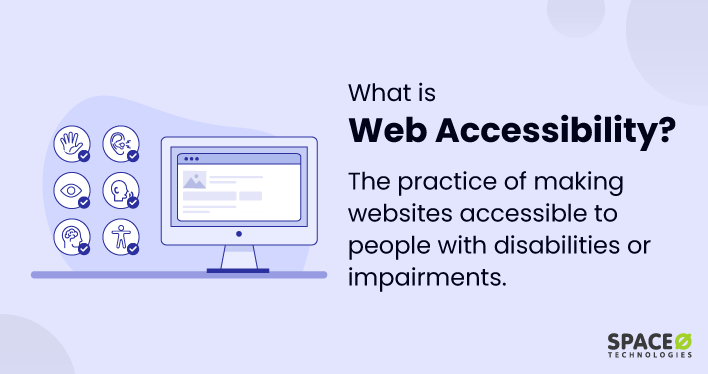VPN Wisdom: Your Guide to Online Privacy
Explore the world of VPNs and enhance your online security.
Everyone Deserves to Click: Why Web Accessibility Matters
Unlock the web for all! Discover why web accessibility is crucial and how it empowers every user. Don't miss out on inclusive design insights!
What Is Web Accessibility and Why Is It Essential for Everyone?
Web accessibility refers to the practice of designing and developing websites and applications that can be accessed and utilized by all individuals, including those with disabilities. This encompasses a range of disabilities, from visual impairments and hearing loss to cognitive and motor challenges. By implementing accessibility standards, such as the Web Content Accessibility Guidelines (WCAG), developers ensure that their content is perceivable, operable, understandable, and robust for everyone. Ultimately, accessible web design not only benefits users with disabilities but also enhances the overall user experience for everyone, leading to increased engagement and satisfaction.
The importance of web accessibility extends beyond ethical considerations; it is a legal requirement in many jurisdictions. Many governments and organizations have established regulations mandating that digital content should be accessible to all. Furthermore, creating an inclusive online environment fosters a sense of community and belonging. By ensuring accessibility, businesses can reach a wider audience, improve their search engine rankings, and promote social equity. In summary, web accessibility is essential not only for compliance and respect for users' rights but also for enhancing online visibility and user experience for everyone.

Top 10 Benefits of Making Your Website Accessible
Making your website accessible is not just a best practice; it’s a necessity in today’s digital landscape. By adhering to accessibility standards, you ensure that your site is usable by everyone, including individuals with disabilities. This commitment can enhance your site’s user experience while simultaneously expanding your audience reach. When you prioritize accessibility, you're opening doors to approximately 15% of the global population who experience some form of disability, which translates to millions of potential customers.
Moreover, accessibility can positively impact your site's SEO. Search engines favor websites that provide a better overall user experience, including those that are easy to navigate for all users. Specific accessibility features, such as proper alt text for images and accessible navigation, can improve your rankings on search engines. Ultimately, making your website accessible not only fulfills ethical and legal obligations but also delivers tangible business benefits, such as increased traffic and higher conversion rates.
How to Identify and Fix Accessibility Issues on Your Website
Identifying accessibility issues on your website is crucial to ensuring that all users, including those with disabilities, can navigate and interact with your content effectively. Start by using automated tools such as accessibility checkers, which can quickly scan your site for many common issues such as missing alt text, contrast problems, and inadequate heading structures. Following this, manual testing should be conducted. Engage real users with disabilities to provide feedback on their experience and identify any challenges they encounter.
Once you've identified the accessibility issues, take actionable steps to rectify them. For instance, ensure that all images have appropriate alt attributes that describe their content, as these are vital for users relying on screen readers. Additionally, improve text contrast by using tools like the WebAIM Contrast Checker, ensuring that your text is easily readable against its background. Create a clear and logical heading hierarchy using <h1>, <h2>, and so on, to assist all users in navigating your content easily. Addressing these issues not only enhances user experience but also helps your SEO, making your site more inclusive and reach a broader audience.